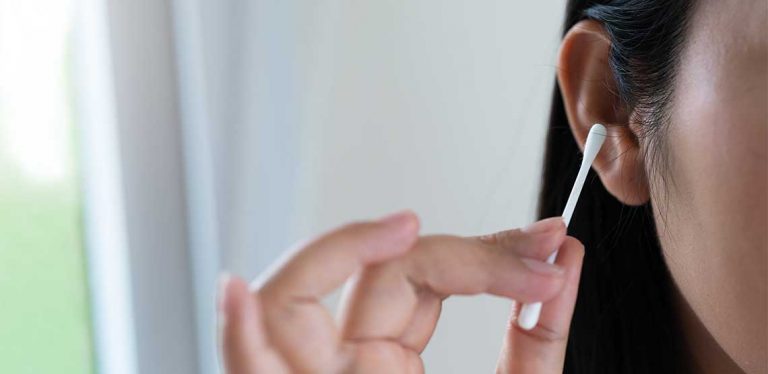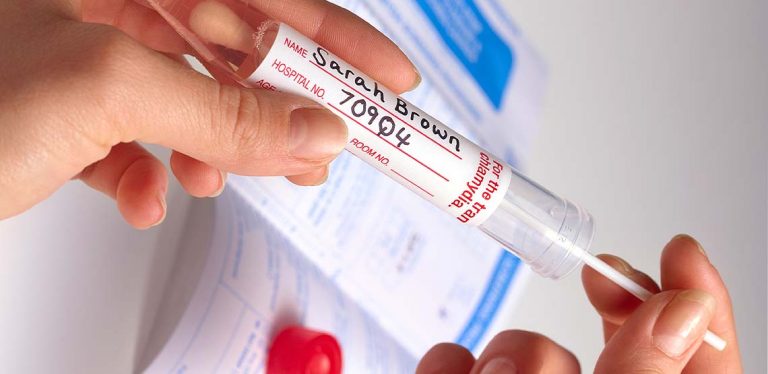How to Get Rid of Earwax
Ears generate earwax as a natural cleanser. It serves to rid your ear canal of unwanted debris and even small insects. It acts as a self-cleaning agent for your ears, and therefore, ears should have a decent amount of earwax to keep them healthy. So, in general, if your earwax is not causing a blockage in the ear canal, it is not advisable to remove it. But, in the case that a buildup of earwax causes you issues, we will cover how to get rid of earwax.
We all know that earwax buildup can sometimes feel itchy or be embarrassing when other people see it. It’s tempting to remove earwax using unconventional items, such as bobby pins or cotton swabs, which can actually make the situation worse. In this article, we discuss how to get rid of that excess earwax safely!
How is Earwax Formed?
Earwax, also known medically as cerumen, is formed by the oil and sweat glands found in your ear canal’s skin. It naturally forms in the ear canal and is propelled outward toward the ear opening while collecting debris such as dead skin, hair, and dirt. The movement of your jaw naturally drives out any debris from your ears and causes it to fall out with the dried earwax. Earwax is also proven to have properties that kill bacteria and fungi! The formation of at least some earwax is necessary for your ears’ self-maintenance.
Some people produce more earwax than others. Ears that have dry, flaky skin are found in people with conditions such as eczema (a form of skin hypersensitivity). Even genetics play a role in the excess production of earwax, as dry earwax is more commonly found in East Asians. Age can also alter the consistency of earwax. Older individuals experience changes in their glands, resulting in more dry and flaky earwax over time.
Practices to Avoid
First, we feel the need to emphasize that you should never insert bobby pins, cotton swabs, and similar objects into the ears. These objects tend to push the earwax deeper into the ear canal toward the eardrum. They may cause a blockage, impaction of the cerumen, or it can even damage your eardrum.
Another common practice to avoid is ear candling. Ear candles are not effective in removing earwax and may lead to a blockage of candle wax in someone who previously had clean ear canals. In addition, ear candling can also cause burns and even cause damage to your eardrum.
Safe Home-Removal Practices for Earwax
Earwax is best left alone and allowed to fall off out its own. In certain instances, such as an impacted cerumen or when the flakes formed on the outer ear cause discomfort, earwax can easily and safely be removed at home using over-the-counter products and common household items. Do not try these home remedies if you are experiencing any pain or infection in your ears!
Related Search Topics (Ads)
The most effective and safest way to remove excess earwax or earwax from an impacted cerumen involves the following three steps:
1. Soften and Loosen the Earwax
Use over-the-counter ear drops to break up the earwax. You can use either water-based or oil-based ear drops as studies have shown that neither type is superior to the other. You can also use plain water, a simple saline solution, or hydrogen peroxide if ear drops are unavailable. To use these:
- Place 2‒3 drops into the opening of the ear canal with your head tilted, so the opening of the ear is pointing up.
- Wait for 10 to 15 minutes and place the same amount to the opposite ear. Sometimes, this step alone is enough to remove the break and drain out the earwax.
2. Irrigate the Earwax
If the eardrops are not sufficient to remove the earwax, you can then proceed to this step. Use a rubber-bulb syringe and gently squirt warm water into the ear canal. After instilling the water, tilt your head to the side to drain any excess water and earwax.
3. Dry the Ear Canal
After putting liquid in your ears, be sure to always end the procedure by drying the outer ear using a paper towel or a clean cloth.
When done correctly, these steps are highly effective in removing earwax. However, you may need to repeat the process up to twice a day for a couple of days to break down and remove the earwax completely. If, after multiple attempts, the earwax is still difficult to remove, see your doctor.
Seeing Your Doctor
Do not try our do-it-yourself removal if any of these signs and symptoms accompany your buildup of earwax:
- Changes in hearing
- Any pain felt in and around the ear
- Swelling
- Headaches
- Cough
- Foul-smelling discharge from the ear
- A recurring buildup of earwax
If you feel any of the symptoms listed above, immediately see your doctor so they can tell you how to get rid of earwax. The doctor can diagnose any additional problems you may have. They have special instruments in their clinic to clearly visualize and remove the buildup of earwax safely.

